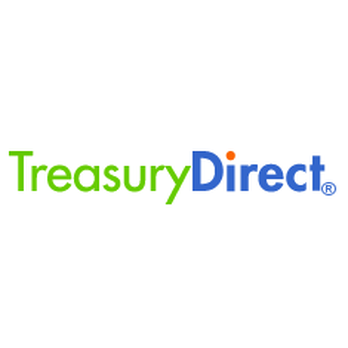
How do I choose the best stock to invest in? There are many factors you must take into consideration when investing in a stock. You should first read the annual report. This will give an overview of the company’s financial performance, as well as information about its bottom-line. The quarterly reports will provide important financial information, as well details about the business. You should keep an open mind when reading these reports and have a strategy in place.
Value stocks
You need to be familiar with certain metrics in order to buy value stocks. The price to earnings ratio (or P/E) is one of these metrics. It is a key metric when determining a value stock's value. This ratio shows how earnings of the company compare to its market value. It will also give an indication of future earnings expectations. This will allow you to make educated decisions about which stocks are worth your money.
Many quality companies see an increase in their valuations as the Federal Reserve increases its interest rate. In addition to being undervalued, value stocks often do very well in an inflationary environment. Computer Task Group, Inc., Titan Machinery Inc., KT Corporation, all are examples of valuable stocks. These stocks may be great buys depending on your risk tolerance. Many analysts rate the stock as a strong buy.

Stocks of growth
To find great growth stocks, you must first identify a macrotrend. A good example of this is the rise and rise of digitization in the last two decades. This has led to the rise of ecommerce, streaming entertainment, cashless payments, and ecommerce. Growth stock investors seek companies that will benefit from these new changes. This includes those that are already profitable, but still pursue new avenues of success. These are some companies that are making waves within the stock exchange.
A great way to gain a share of the large growth pie is to invest in disruptive companies. Investors who invest in these companies have an advantage. It gives them the chance to invest with the next Apple, Facebook and Google. This type of investment can help you grow your stock portfolio. If you have patience and the knowledge to spot top-performing growth stocks, you can build a portfolio that will yield great returns.
Dividend stocks
There are many factors that you need to keep in mind when investing in dividend stocks. Here are the top factors you should consider before buying dividend stocks. A dividend is a portion of the company's profits. A high dividend payment could mean that the company is unable to sustain itself long-term. It is also worth looking at the company's ratio of equity to debt, as this can indicate whether the company will be able to sustain itself in the long-term.
Dividend investing offers a low level of risk, which is one of its key advantages. Although it might seem conservative, dividend investing is a great way to create long-term wealth. In fact, dividends account for over 40% of the S&P500's total return in the last 80 years. This means that your risk is lower than if the stock were high-yielding. You shouldn't buy only the highest paying stocks. High dividends can often be for a valid reason.

Dividend stocks that have room for growth
While you are researching, you may be wondering if dividend stock have potential for growth. You see, the U.S. is becoming older and advances in healthcare are allowing for longer life expectancies. Apple is one example of such a company. The company is seeing a rise in profits and sales. In fact, in its first two quarters this year, the company's gross profit margins were 38% for its products and 72% for its services.
To make money with dividend growth, you must choose companies that have moats to protect their profits from competitors. Warren Buffett did this by purchasing firms with strong moats. If they can't protect their market position, they will likely revert to their historical profitability and growth levels and their stock will likely plummet. But, it is possible to choose a dividend stock which has room for growth, high dividend yield, and is widely regarded by investors.
FAQ
What is the difference?
Brokers are people who specialize in helping individuals and businesses buy and sell stocks and other forms of securities. They manage all paperwork.
Financial advisors are experts in the field of personal finances. They are experts in helping clients plan for retirement, prepare and meet financial goals.
Banks, insurers and other institutions can employ financial advisors. They may also work as independent professionals for a fee.
If you want to start a career in the financial services industry, you should consider taking classes in finance, accounting, and marketing. Also, it is important to understand about the different types available in investment.
What is the difference between non-marketable and marketable securities?
The key differences between the two are that non-marketable security have lower liquidity, lower trading volumes and higher transaction fees. Marketable securities can be traded on exchanges. They have more liquidity and trade volume. Marketable securities also have better price discovery because they can trade at any time. This rule is not perfect. There are however many exceptions. For instance, mutual funds may not be traded on public markets because they are only accessible to institutional investors.
Non-marketable security tend to be more risky then marketable. They have lower yields and need higher initial capital deposits. Marketable securities are usually safer and more manageable than non-marketable securities.
A large corporation bond has a greater chance of being paid back than a smaller bond. The reason is that the former is likely to have a strong balance sheet while the latter may not.
Because they can make higher portfolio returns, investment companies prefer to hold marketable securities.
What is a REIT?
An REIT (real estate investment trust) is an entity that has income-producing properties, such as apartments, shopping centers, office building, hotels, and industrial parks. They are publicly traded companies that pay dividends to shareholders instead of paying corporate taxes.
They are similar to corporations, except that they don't own goods or property.
What is a mutual-fund?
Mutual funds consist of pools of money investing in securities. Mutual funds offer diversification and allow for all types investments to be represented. This helps to reduce risk.
Managers who oversee mutual funds' investment decisions are professionals. Some funds permit investors to manage the portfolios they own.
Mutual funds are more popular than individual stocks, as they are simpler to understand and have lower risk.
Stock marketable security or not?
Stock is an investment vehicle that allows investors to purchase shares of company stock to make money. This is done by a brokerage, where you can purchase stocks or bonds.
Direct investments in stocks and mutual funds are also possible. In fact, there are more than 50,000 mutual fund options out there.
The main difference between these two methods is the way you make money. Direct investment is where you receive income from dividends, while stock trading allows you to trade stocks and bonds for profit.
In both cases, ownership is purchased in a corporation or company. If you buy a part of a business, you become a shareholder. You receive dividends depending on the company's earnings.
Stock trading gives you the option to either short-sell (borrow a stock) and hope it drops below your cost or go long-term by holding onto the shares, hoping that their value increases.
There are three types: put, call, and exchange-traded. Call and Put options give you the ability to buy or trade a particular stock at a given price and within a defined time. ETFs, which track a collection of stocks, are very similar to mutual funds.
Stock trading is very popular because it allows investors to participate in the growth of a company without having to manage day-to-day operations.
Stock trading can be a difficult job that requires extensive planning and study. However, it can bring you great returns if done well. To pursue this career, you will need to be familiar with the basics in finance, accounting, economics, and other financial concepts.
Statistics
- "If all of your money's in one stock, you could potentially lose 50% of it overnight," Moore says. (nerdwallet.com)
- Individuals with very limited financial experience are either terrified by horror stories of average investors losing 50% of their portfolio value or are beguiled by "hot tips" that bear the promise of huge rewards but seldom pay off. (investopedia.com)
- Even if you find talent for trading stocks, allocating more than 10% of your portfolio to an individual stock can expose your savings to too much volatility. (nerdwallet.com)
- Ratchet down that 10% if you don't yet have a healthy emergency fund and 10% to 15% of your income funneled into a retirement savings account. (nerdwallet.com)
External Links
How To
How to make your trading plan
A trading plan helps you manage your money effectively. It helps you identify your financial goals and how much you have.
Before creating a trading plan, it is important to consider your goals. It may be to earn more, save money, or reduce your spending. You might consider investing in bonds or shares if you are saving money. If you're earning interest, you could put some into a savings account or buy a house. Perhaps you would like to travel or buy something nicer if you have less money.
Once you decide what you want to do, you'll need a starting point. This will depend on where you live and if you have any loans or debts. Also, consider how much money you make each month (or week). Income is what you get after taxes.
Next, save enough money for your expenses. These expenses include rent, food, travel, bills and any other costs you may have to pay. All these things add up to your total monthly expenditure.
You'll also need to determine how much you still have at the end the month. This is your net income.
You're now able to determine how to spend your money the most efficiently.
You can download one from the internet to get started with a basic trading plan. You could also ask someone who is familiar with investing to guide you in building one.
Here's an example: This simple spreadsheet can be opened in Microsoft Excel.
This is a summary of all your income so far. This includes your current bank balance, as well an investment portfolio.
And here's a second example. This was created by an accountant.
It will allow you to calculate the risk that you are able to afford.
Don't attempt to predict the past. Instead, you should be focusing on how to use your money today.